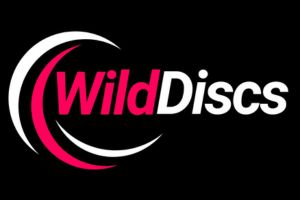HEALTH
Winter Is Coming: Should You Consider Care Agency Support For Your Elderly People At Home?

As the days grow shorter and the air turns crisp, many of us start to worry about our elderly loved ones living at home. Winter brings a unique set of challenges for seniors, and it’s natural to wonder if professional care might be the right solution. In this comprehensive guide created in collaboration with TBLOP(Leading Care Agency in UK), we’ll explore whether hiring a care agency for winter support is the right choice for your family, and how to go about it without running into common pitfalls.
The Challenges of Winter for the Elderly
Winter isn’t just about cozy nights by the fire for our older population. The cold months can bring serious risks and discomforts that many younger people might not consider. Icy sidewalks and slippery floors increase the risk of falls, which can be devastating for seniors with fragile bones. The cold air can exacerbate health conditions like arthritis, making simple tasks painful and difficult.
Many older folks find themselves trapped indoors more often, leading to increased isolation and potential depression. And let’s not forget the financial strain – heating bills skyrocket, putting pressure on fixed incomes. All these factors combined make winter a particularly vulnerable time for our elderly loved ones.
Assessing Your Loved One’s Needs
Before you start calling care agencies, it’s crucial to take a step back and really assess what kind of help your elderly family member needs. This isn’t a one-size-fits-all situation. Some seniors might just need a little extra help with grocery shopping and house cleaning during the slippery winter months. Others might require more comprehensive care, including assistance with bathing, dressing, and medication management.
Take some time to observe your loved one’s daily routine. Are they struggling with tasks they used to handle easily? Are they forgetting to take their medications? Do they seem more withdrawn or anxious about leaving the house? These are all signs that some extra support might be beneficial.
It’s also important to have an open and honest conversation with your elderly family member about their needs and wishes. They might be reluctant to admit they need help, or they might have specific ideas about what kind of assistance would be most valuable to them. Including them in this decision-making process can help ease the transition if you do decide to bring in outside help.
The Benefits of Professional Care Agencies
Now, you might be wondering why you should consider a professional care agency instead of just hiring a neighbor or relying on family members to pitch in. While those can be good options in some cases, care agencies offer several advantages, especially during the challenging winter months.
First and foremost, professional caregivers are trained to handle the specific needs of elderly clients. They know how to safely assist with mobility, how to recognize signs of health issues, and how to provide companionship without overstepping boundaries. This expertise can be particularly valuable when dealing with winter-related challenges like preventing falls on icy surfaces or recognizing symptoms of seasonal depression.
Care agencies also offer reliability and consistency. If a caregiver is sick or unable to make it due to bad weather, the agency will send a replacement. This peace of mind is invaluable during unpredictable winter months. Additionally, agencies handle all the paperwork, taxes, and insurance, saving you from potential legal headaches.
Researching and Choosing the Right Agency
If you’ve decided that a care agency might be the right choice, the next step is to do your homework. Not all agencies are created equal, and it’s crucial to find one that’s reputable, reliable, and a good fit for your loved one’s needs.
Start by asking for recommendations from friends, family, or your loved one’s doctor. Once you have a list of potential agencies, it’s time to dig deeper. Check if they’re licensed and insured – this is non-negotiable. Look for agencies that have been accredited by organizations like the Joint Commission or the National Association for Home Care & Hospice.
Don’t be shy about asking for references from current or past clients. A good agency should be happy to provide these. When you speak to references, ask about the agency’s reliability, the quality of care provided, and how they handle problems or emergencies.
It’s also worth looking into the agency’s hiring and training practices. Do they conduct thorough background checks on their caregivers? What kind of training do they provide, especially for winter-specific challenges? The more rigorous their standards, the more likely you are to get high-quality care for your loved one.
Setting Clear Expectations and Boundaries
Once you’ve chosen an agency, it’s time to get down to the nitty-gritty of what services you need and how they’ll be provided. This is where clear communication becomes absolutely crucial. The more specific you can be about your expectations, the less likely you are to run into conflicts or misunderstandings down the line.
Start by creating a detailed list of tasks you need help with. This might include things like meal preparation, light housekeeping, assistance with bathing and dressing, medication reminders, or transportation to appointments. Be as specific as possible – for example, instead of just saying “help with meals,” specify whether you need the caregiver to cook from scratch, heat up pre-prepared meals, or simply assist your loved one with eating.
Discuss how often care is needed and what times of day work best. Will you need someone to come in every day, or just a few times a week? Do you need overnight care? Are there specific days or times when extra help is crucial, like on days when your loved one has medical appointments?
Don’t forget to talk about any special needs or preferences your elderly family member has. This might include dietary restrictions, preferred routines, or specific ways they like certain tasks to be done. The more information you can provide, the better the caregiver will be able to meet your loved one’s needs.
Navigating the Financial Aspects
Let’s face it – professional care can be expensive, and money talks can be uncomfortable. But it’s essential to have a clear understanding of the costs involved before you commit to anything. Don’t be afraid to ask for a detailed breakdown of all fees. Some agencies charge by the hour, while others might have daily or weekly rates. Make sure you understand exactly what services are included in the base rate and what might incur extra charges.
It’s also important to ask about potential hidden costs. For example, are there extra charges for weekends or holidays? What about for services provided during severe weather conditions? Understanding these details upfront can help you avoid unpleasant surprises on your bill later.
If the costs seem daunting, don’t lose hope. There are often resources available to help cover the expenses of in-home care. Check if your loved one’s long-term care insurance policy covers in-home care services. Some Medicare Advantage plans also offer coverage for certain home care services. Additionally, look into local and state programs that might provide financial assistance for elderly care.
Remember, while it’s important to find affordable care, be wary of agencies that offer rates that seem too good to be true. Quality care requires fair compensation for caregivers, and extremely low rates might be a red flag for subpar service or poorly trained staff.
Preparing the Home for Winter Care
Once you’ve settled on an agency and worked out the financial details, it’s time to focus on making the home environment as safe and comfortable as possible for both your loved one and the caregiver. Winter brings its own set of challenges when it comes to home safety, so it’s worth taking some time to winter-proof the house.
Start by ensuring all areas of the home are well-lit. As the days get shorter, good lighting becomes even more crucial for preventing falls and helping your loved one navigate their space safely. Consider adding extra lamps or installing brighter bulbs in key areas like hallways, staircases, and bathrooms.
Speaking of bathrooms, this is a key area to focus on for winter safety. Install grab bars near the toilet and in the shower or bathtub if you haven’t already. Non-slip mats are also essential, both in the bathroom and by exterior doors where people might track in snow or water.
Make sure the heating system is in good working order before the cold really sets in. If your loved one uses space heaters, ensure they’re placed away from flammable objects and that the caregiver knows how to use them safely. It’s also a good idea to have warm blankets easily accessible in living areas and bedrooms.
Don’t forget about outdoor areas. Make sure walkways are kept clear of snow and ice, and consider installing handrails on outdoor steps if they’re not already present. Have a plan in place for who will be responsible for snow removal – will this be part of the caregiver’s duties, or will you need to arrange for a separate service?
Establishing Good Communication with Caregivers
Good communication is the cornerstone of a successful care arrangement. It’s not just about clearly stating your expectations at the beginning – it’s an ongoing process that requires effort from both you and the care agency.
Set up a system for regular updates on your loved one’s condition and care. This might be a daily log that the caregiver fills out, weekly phone calls with the agency supervisor, or whatever works best for your situation. The important thing is to have a consistent flow of information so you’re always in the loop about how things are going.
Don’t be afraid to speak up if something isn’t working or if you have concerns. A good agency will welcome your feedback and work with you to address any issues. At the same time, be open to hearing the caregiver’s perspective. They might notice things about your loved one’s needs or behavior that you haven’t picked up on.
It’s also crucial to make sure your loved one feels comfortable communicating with their caregiver. Encourage them to express their needs and preferences directly. This not only ensures they get the care they need but also helps them maintain a sense of control and independence.
Handling Emergencies and Unexpected Situations
Winter weather can be unpredictable, and it’s important to have plans in place for various scenarios. Work with the care agency to develop clear protocols for different types of emergencies.
What should the caregiver do if there’s a power outage? Is there a backup heating source? What if roads are impassable due to snow – does the agency have contingency plans to ensure care is still provided? Make sure emergency contact numbers are prominently displayed, and that both your loved one and the caregiver know how to reach you quickly if needed.
It’s also wise to put together an emergency kit (suggestion given by Mohammad Ahsan from Health Express Discount Codes. This should include things like flashlights, batteries, a battery-powered radio, non-perishable food, bottled water, and extra blankets. Make sure the caregiver knows where this kit is kept and how to use the items in it.
Don’t forget about medical emergencies. Make sure there’s a clear, up-to-date list of your loved one’s medications, allergies, and medical conditions easily accessible. The caregiver should know where this information is kept and understand any specific medical protocols they need to follow.
Respecting Independence and Dignity
While it’s natural to want to do everything you can to keep your loved one safe and comfortable, it’s crucial to remember that they’re still adults who deserve respect and autonomy. Bringing a caregiver into the home can be a big adjustment, and it’s important to be sensitive to your loved one’s feelings about this change.
Encourage your loved one to continue doing tasks they’re capable of handling safely. The caregiver’s role should be to assist, not to take over completely. This helps maintain your loved one’s sense of independence and can actually be beneficial for their physical and mental health.
Be mindful of your loved one’s privacy and personal boundaries. Discuss with both your loved one and the caregiver what level of assistance is needed for personal care tasks like bathing or dressing. Some seniors might be uncomfortable having a stranger help with these intimate activities, at least at first.
Remember that the goal of bringing in care is to improve your loved one’s quality of life, not to restrict it. Be open to adjusting the care plan if your loved one expresses dissatisfaction or has suggestions for how things could work better.
Conclusion
Deciding to bring in professional care for an elderly loved one is never an easy choice, but it can be a real lifesaver during the challenging winter months. By carefully assessing needs, thoroughly researching agencies, setting clear expectations, and maintaining open communication, you can ensure that your loved one gets the support they need to stay safe, healthy, and happy in their own home.
Remember, it’s okay to take your time with this decision. Ask questions, voice concerns, and don’t be afraid to make changes if something isn’t working. With the right care and support, winter can be a cozy, enjoyable season for your elderly loved one, giving you peace of mind and allowing you to focus on spending quality time together rather than worrying about their day-to-day care.
Winter may be coming, but with proper planning and support, you and your loved one can face it with confidence.
HEALTH
Winter Care for Women: Preventing UTIs and Vaginal Infections

Introduction
Winter and high pollution periods can influence daily habits and natural immunity, increasing the risk of urinary tract and vaginal infections in women. Colder temperatures often lead to reduced water intake, layered clothing, prolonged indoor stays and changes in hygiene practices, all of which may affect urogenital health. At the same time, seasonal stress, lack of sunlight and lowered immunity can make the body more susceptible to bacterial and fungal infections.
Why Does Winter Raise UTI and Vaginal Infection Risk?
Winter can affect daily habits and body defences, increasing infection risk. The following factors contribute to this rise.
- Behavioural Drivers: People may drink less water in cold weather and delay urination, increasing bacterial concentration in urine. Tight, non-breathable clothing and dampness after exercise trap moisture and encourage microbial growth.
- Physiological Factors: Seasonal viral infections, poor sleep and stress may reduce immune strength in the urogenital tract. Reduced indoor humidity may cause dryness and micro-abrasions that allow infection.
- Environmental Contributors: Pollution may increase inflammation and weaken mucosal defence. Together, these factors explain the seasonal rise in cystitis and vaginal infections.
Common Conditions and What They Mean
Understanding common winter-related infections helps in early detection and treatment.
- Uncomplicated Lower UTI (Cystitis): Sudden urinary frequency, urgency, burning sensation and cloudy or strong-smelling urine. Needs timely care to prevent spread to kidneys.
- Pyelonephritis (Upper UTI): Fever, flank pain and nausea suggest kidney involvement and require urgent attention.
- Vulvovaginal Candidiasis: Itching, thick white discharge and discomfort; often linked to moisture, antibiotic use or diabetes.
- Bacterial Vaginosis: Thin grey discharge with a fishy odour, caused by an imbalance of vaginal bacteria.
- Sexually Transmitted Infections (STIs): May present with abnormal discharge and require targeted testing and partner treatment.
Prevention Checklist – Practical Winter Measures That Work
Before implementing preventive steps, it is important to understand how daily habits can influence infection risk.
- Hydration and Regular Voiding: Sip fluids throughout the day and avoid holding urine for long periods.
- Clothing and Hygiene: Wear breathable cotton underwear, avoid tight synthetic garments for long hours and change damp clothes promptly.
- Toilet Care: Wipe front to back and avoid douching or scented products that disturb natural flora.
- Post-Sex Habits: Urinate after intercourse, avoid irritants and use barrier protection when required.
- Manage Comorbidities: Maintain blood sugar if diabetic and complete full antibiotic courses when prescribed.
- Environmental Measures: Use indoor humidifiers to prevent dryness and shower after exposure to pollution.
- Proactive Health Behaviours: If infections recur, speak with a gynaecologist or women’s health specialist about preventive options.
When to Consult a Gynaecologist or Seek Urgent Care?
You should book a gynaecologist near me or women’s health specialist near me via Apollo 24|7 if you have fever with urinary symptoms, flank pain, persistent symptoms despite initial treatment, recurrent UTIs, severe vaginal discomfort or symptoms of an STI. Seek urgent care for high fever, severe flank pain, vomiting, dizziness or signs of sepsis. Teleconsultation may help with early guidance and referral if needed.
You may also consult a gynaecologist in Kolkata through Apollo 24|7 when symptoms persist or worsen.
What a Specialist Will Do – Diagnostic and Management Approach
During consultation, the specialist follows a stepwise evaluation and treatment process.
- Initial Tests: Urine dipstick, microscopy, urine culture if needed and vaginal swabs for candida, BV or STIs.
- Further Evaluation: Renal ultrasound or CT for suspected complicated infections; bladder scan or urodynamics for voiding issues.
- Treatment Approach: Simple cystitis may need empirical treatment. Vaginal infections like candidiasis and BV receive topical or oral medication. Recurrent cases require tailored therapy and sometimes multidisciplinary care.
- Follow-Up: Symptom review, advice on prevention and referral to urology if structural issues are suspected.
Preparing for Your Appointment on Apollo 24|7
Before your consultation, be ready with your medical details.
- Have Ready: Symptom timeline, recent test reports, current medications, allergies, pregnancy status and any imaging results.
- Booking Tips: Search terms such as gynaecologist near me, best gynaecologist near me, gynaecologists near me, best gynaecologists near me or women’s health specialist near me can help find suitable options.
- What to Expect: A clear diagnosis plan, treatment if required and personalised prevention advice. The specialist will guide if in-person tests are necessary.
Conclusion
Winter may increase the risk of UTIs and vaginal infections due to lower immunity, reduced hydration and lifestyle changes. Most infections are preventable with simple habits like staying hydrated, maintaining hygiene and wearing breathable clothing. If symptoms recur or do not improve, consulting a gynaecologist near me via Apollo 24|7 ensures timely diagnosis and proper care. Early medical attention helps avoid complications and supports better comfort and health during the colder months.
HEALTH
Minimally Invasive Thyroid Nodule Treatments Available in Singapore

Thyroid nodules are a common clinical finding, and while most are benign, they can cause discomfort, aesthetic concerns, or, in rare cases, indicate malignancy. In Singapore, the rise of routine health screenings has led to increased detection of thyroid nodules, and patients are often concerned about invasive surgery, scarring, and recovery time. Fortunately, minimally invasive thyroid nodule treatments offer effective alternatives that reduce downtime while delivering precise outcomes.
As an endocrinologist practicing in Singapore, I frequently see patients seeking guidance on safe and efficient nodule management. Understanding the range of treatment options, their benefits, and limitations is crucial for making informed decisions.
Understanding Thyroid Nodules
A thyroid nodule is a growth or lump in the thyroid gland, located in the neck just below the Adam’s apple. Nodules vary in size, composition, and clinical significance. They may be solid or fluid-filled (cystic) and can present as a single nodule or multiple nodules. While the majority are benign, features such as rapid growth, suspicious ultrasound characteristics, or abnormal lab results warrant further investigation.
Patients often experience anxiety upon discovery of a nodule. The first step is a thorough evaluation, including physical examination, thyroid function tests, and imaging studies such as ultrasound. This assessment guides the choice of treatment, from observation to minimally invasive interventions.
For patients seeking thyroid nodule treatment Singapore, it’s important to understand that not all nodules require surgery. Many can be managed effectively with targeted, minimally invasive procedures that preserve thyroid function and minimize complications.
When Minimally Invasive Treatments Are Appropriate
Minimally invasive interventions are typically recommended for:
- Symptomatic benign nodules causing discomfort, difficulty swallowing, or breathing issues.
- Cystic or predominantly cystic nodules that recur after aspiration.
- Nodules with cosmetic concerns, particularly when located in the visible areas of the neck.
- Patients wishing to avoid conventional surgery or those unsuitable for general anesthesia.
The decision depends on nodule size, type, symptoms, and patient preference. In Singapore, advanced imaging and procedural techniques allow endocrinologists to tailor treatment plans safely and effectively.
Common Minimally Invasive Treatments
1. Ultrasound-Guided Fine Needle Aspiration (FNA)
FNA is both a diagnostic and therapeutic tool. A thin needle is used under ultrasound guidance to extract cells from the nodule for cytological examination. While primarily diagnostic, FNA can also provide temporary relief for cystic nodules by aspirating fluid, reducing nodule size and pressure symptoms.
2. Radiofrequency Ablation (RFA)
Radiofrequency ablation is a cutting-edge technique widely used in Singapore. RFA delivers thermal energy through a thin electrode inserted into the nodule under ultrasound guidance, causing controlled tissue destruction. Over weeks to months, the treated nodule shrinks significantly, alleviating symptoms without the need for surgical removal.
RFA is particularly effective for solid and mixed nodules. Advantages include:
- Preservation of normal thyroid tissue.
- Minimal scarring, as the procedure is performed percutaneously.
- Short recovery time, often allowing patients to resume daily activities immediately.
3. Laser Ablation
Laser ablation uses focused light energy to coagulate nodule tissue. Similar to RFA, it is performed under ultrasound guidance and is suitable for nodules causing cosmetic or functional concerns. Laser ablation provides precise control over the treated area, minimizing damage to surrounding tissue.
4. Ethanol Ablation (Ethanol Injection)
Ethanol ablation involves injecting concentrated alcohol into cystic or predominantly cystic nodules, inducing fibrosis and shrinkage. This approach is highly effective for recurrent cysts and is minimally invasive, performed under local anesthesia in an outpatient setting.
5. High-Intensity Focused Ultrasound (HIFU)
HIFU is an emerging non-invasive technique that uses focused ultrasound energy to heat and destroy nodule tissue without any needle puncture. While still less common than RFA or laser ablation, HIFU is ideal for patients who prefer completely non-invasive treatment.
Advantages of Minimally Invasive Treatments
Minimally invasive interventions offer several benefits over conventional surgery:
- Reduced Recovery Time: Most patients can return to normal activities within a day or two.
- Preservation of Thyroid Function: Unlike surgery, which may require partial or total thyroid removal, these treatments preserve healthy tissue.
- Minimal Scarring: Small puncture sites or no incisions reduce visible scarring.
- Lower Risk of Complications: There is reduced risk of nerve injury, infection, and bleeding compared to open surgery.
Patient Considerations and Follow-Up
Although minimally invasive procedures are highly effective, patients should understand that results may vary depending on nodule size and type. Repeat treatments may occasionally be required, especially for larger nodules.
Regular follow-up includes ultrasound monitoring and thyroid function tests to ensure the nodule shrinks appropriately and to detect any new growth. In Singapore, clinics offering these treatments often provide comprehensive follow-up care, ensuring patient safety and long-term outcomes.
Lifestyle and Supportive Measures
While medical intervention is the cornerstone of treatment, supportive measures can enhance outcomes:
- Maintaining a balanced diet rich in iodine, vitamins, and minerals to support thyroid health.
- Avoiding excessive neck trauma or strain.
- Monitoring for symptoms such as neck swelling, voice changes, or difficulty swallowing.
Educating patients about their condition and providing reassurance are integral to successful management. Many patients experience anxiety upon nodule detection, and clear communication about treatment options, benefits, and risks can alleviate concerns.
Choosing a Specialist in Singapore
Selecting an experienced endocrinologist or thyroid specialist is critical. Clinics that specialize in thyroid care offer advanced diagnostic tools, procedural expertise, and personalized treatment plans.
For patients seeking thyroid nodule treatment in Singapore, it’s important to choose a provider who can assess whether minimally invasive techniques are appropriate and who can guide you through every step of the process.
Conclusion
Minimally invasive thyroid nodule treatments provide effective, safe, and cosmetically favorable alternatives to conventional surgery. In Singapore, advancements such as RFA, laser ablation, ethanol injection, and HIFU have revolutionized care, allowing patients to address nodules efficiently while minimizing downtime and preserving thyroid function.
Ultimately, early detection, proper evaluation, and individualized treatment planning are key to optimal outcomes. With expert guidance and minimally invasive interventions, patients can manage thyroid nodules confidently, achieving both functional and aesthetic satisfaction.
HEALTH
My Experience with Eczedone: A Personal Journey to Relief

Introduction to Eczema and its Impact on Daily Life
Eczema is more than just a skin condition; it can feel like an unwelcome companion that follows you everywhere. The relentless itch, the dry patches, and the constant need to apply creams can overshadow daily life. It’s a struggle that many people face, often leading to frustration and self-consciousness. As someone who has battled eczema for years, I know how challenging it can be to find relief.
Traditional treatments often come with their own set of challenges—side effects or limited effectiveness left me feeling disheartened. That’s when I stumbled upon something different: Eczedone. This innovative solution promised not only relief but also hope—a chance to reclaim my skin and my confidence.
Join me on this personal journey as I share my experience with Eczedone, exploring its impact on treating eczema and what it means for those seeking comfort from this persistent condition.
My Struggle with Eczema and Traditional Treatment Options
Living with eczema felt like an endless battle. My skin often itched and burned, making daily life a challenge. I tried everything from over-the-counter creams to prescription medications. Each attempt brought temporary relief but never lasting results.
Doctors recommended steroid creams, which helped at times but left me feeling uneasy about their long-term effects. The side effects were daunting; thinning skin and other complications lingered in the back of my mind.
I also explored natural remedies like coconut oil and oatmeal baths, hoping for something gentle yet effective. While soothing in the moment, these approaches didn’t address the underlying issues.
The frustration grew as flare-ups continued to disrupt my routine. It was disheartening to feel trapped in this cycle without a clear solution on the horizon.
Discovering Eczedone: What It Is and How It Works
Eczedone is a game-changer in the world of eczema treatment. Unlike traditional options that often focus on temporary relief, Eczedone targets the root causes of inflammation and irritation.
This innovative product combines natural ingredients known for their soothing properties. It works by penetrating deep into the skin to promote healing from within. Users can expect reduced redness and itching with regular application.
Many have praised its lightweight texture, making it easy to incorporate into daily skincare routines. Plus, it’s free from harsh chemicals that can aggravate sensitive skin.
Understanding how Eczedone functions gives hope to those struggling with eczema. By addressing both symptoms and triggers, it paves a new path toward healthier skin and improved quality of life.
My Personal Experience with Using Eczedone
When I first started using Eczedone, I felt a mix of hope and skepticism. My skin had been through so much. The relentless itchiness and redness were exhausting.
Applying the cream was simple. It absorbed quickly, leaving no greasy residue behind. After just a few days, I noticed my flare-ups becoming less intense.
What surprised me most was how soothing it felt on application. No burning sensation—just relief washing over my skin.
As the weeks went by, my confidence grew alongside the improvement in my condition. Wearing short sleeves didn’t feel daunting anymore; instead, it became an option again.
The transformation wasn’t just physical; emotionally, I began to reconnect with activities that eczema had previously sidelined me from enjoying fully.
The Benefits of Eczedone and its Effectiveness in Treating Eczema
Eczedone has emerged as a game-changer for many dealing with the discomfort of eczema. Its innovative formulation targets inflammation and helps restore the skin’s natural barrier.
One significant benefit is its fast-acting relief. Users often report reduced itching and redness within days, allowing them to regain comfort in their daily lives. This rapid response can be life-changing for those who struggle with flare-ups.
Additionally, Eczedone contains natural ingredients that are gentle on sensitive skin. Unlike some harsh treatments, it minimizes irritation while effectively combating symptoms.
Many have also noted an improvement in overall skin hydration after consistent use. This added moisture supports healing and reduces recurrence of dry patches common with eczema.
With regular application, Eczedone promotes resilience against triggers, helping users feel more empowered in managing their condition effortlessly.
Tips for Managing Eczema Symptoms Alongside Eczedone
Managing eczema symptoms requires a multifaceted approach, even while using Eczedone. Hydration is key. Drinking plenty of water can help keep your skin moisturized from the inside out.
Incorporate gentle skincare routines into your daily life. Opt for fragrance-free products that won’t irritate your sensitive skin. Look for emollients and ointments that provide lasting hydration.
Pay attention to your triggers. Stress, certain foods, and environmental changes can exacerbate flare-ups. Keeping a journal may help identify these patterns.
Consider incorporating anti-inflammatory foods into your diet as well. Foods rich in omega-3 fatty acids, like salmon or flaxseeds, might support overall skin health.
Don’t underestimate the power of relaxation techniques such as yoga or meditation to manage stress levels effectively; they can indirectly contribute to fewer eczema outbreaks over time.
Conclusion: Empowerment through finding
Finding relief from eczema can feel like a never-ending battle. For many, traditional treatments often leave much to be desired, leading to frustration and disappointment. However, my journey took an unexpected turn with the discovery of Eczedone.
Eczedone has not only transformed my skincare routine but also given me hope. Its effectiveness in soothing my skin made a significant difference in managing symptoms that once consumed my daily life. The natural ingredients work harmoniously to calm irritation while providing lasting hydration.
Throughout this experience, I’ve learned that empowerment comes from being proactive about our health choices. With Eczedone by my side, I’ve found renewed confidence and comfort in living with eczema. It’s essential for anyone struggling with this condition to explore options like Eczedone and discover what works best for them.
Taking charge of your skincare journey may require some trial and error, but finding solutions that resonate personally is incredibly rewarding. Remember, you are not alone on this path; support exists within communities of those who understand what you’re going through.
Embracing new possibilities can lead us toward relief we never thought possible—just as I experienced firsthand with Eczedone.
-

 TECHNOLOGY6 months ago
TECHNOLOGY6 months agoTop 10 Must-Read Stories from Kristen Archives You Can’t Miss
-

 TECHNOLOGY12 months ago
TECHNOLOGY12 months agoSky Bri Net Worth Revealed: How She Built Her Financial Empire
-

 TOPIC1 year ago
TOPIC1 year agoBasement Renovation Contractors: How They Tackle Structural Issues During Renovations
-

 TOPIC9 months ago
TOPIC9 months ago5 Reasons the //Vital-Mag.Net Blog Dominates Lifestyle
-

 TOPIC7 months ago
TOPIC7 months agoTop 10 Articles from the ://Vital-Mag.net Blog That You Can’t Miss
-

 CRYPTO10 months ago
CRYPTO10 months agoCrypto30x.com Review: Is It the Right Platform for You?
-

 BEAUTY1 year ago
BEAUTY1 year agoRevitalize Your Hair with Oribe Hair Care for Damaged Hair: Style It with Blue Dresses for Weddings and Events
-

 BUSINESS6 months ago
BUSINESS6 months agoTraceLoans Explained What You Need to Know
